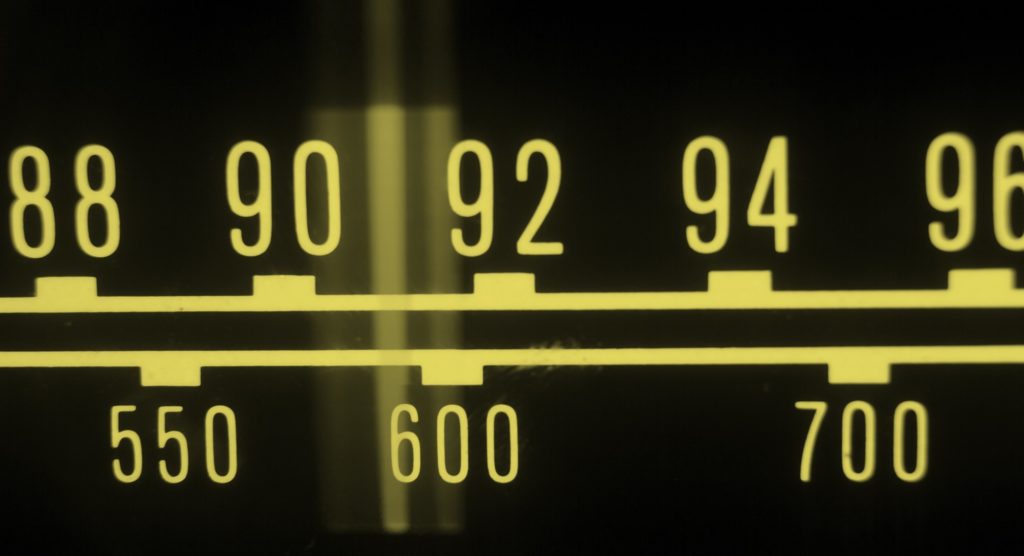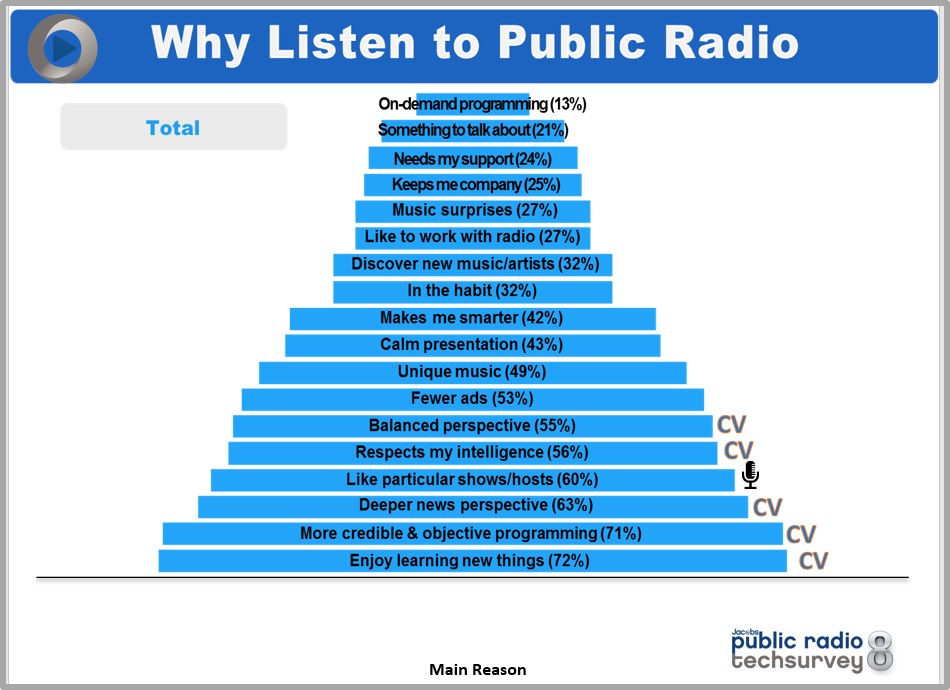
In yesterday’s post, we looked at the rise of NPR’s ratings during the past year, due to the confluence of many factors: the election, podcasting, and digital integration. But the story runs deeper, reflecting a commitment to core values that translates to a high propensity for core listeners to highly recommend their stations and favorite programs to others.
Our recently released Public Radio Techsurvey, in partnership with PRPD, is the eighth in the series, providing a narrative that suggests the platform has continued to grow and innovate. This year’s survey fielded this past spring saw 69 public radio stations participate, generating more than 29.000 responses.
Now it’s important to keep in mind PRTS8 is a web survey, and that more than eight in ten of its respondents are “members” of the public radio stations they listen to – meaning they financially contribute. The study’s reflection of the public radio core offers deep insights into the underpinnings of the medium’s overall success.
And an understanding of why they listen to public radio in the first place underscores the values-based nature of the relationship between stations and listeners.
 It’s all about those core values – established decades ago – but highly apparent and resonant among regular listeners. Learning, credible and objective programming, new perspective, respecting the listener’s intelligence, and balance are all key components in explaining the appeal of public radio to those who value it most. Yes, the programs and hosts are important, as they are in commercial radio. But it’s that public radio stands for values that are of paramount importance to the audience that explains its appeal.
It’s all about those core values – established decades ago – but highly apparent and resonant among regular listeners. Learning, credible and objective programming, new perspective, respecting the listener’s intelligence, and balance are all key components in explaining the appeal of public radio to those who value it most. Yes, the programs and hosts are important, as they are in commercial radio. But it’s that public radio stands for values that are of paramount importance to the audience that explains its appeal.
The marketing consultant, Simon Sinek, talks about why it’s essential for brands to “start with why.” As he reinforces, “People don’t buy what you do, they buy why you do it.” That’s the essence of his famous TED Talk, synopsized in the video below:
https://www.youtube.com/watch?v=IPYeCltXpxw
Adherence to those values leads to loyalty and membership…and recommendation. And its that final piece that has consistently been a key cog in public radio’s success. We use the Net Promoter Score as the barometer of that all-important word-of-mouth measure. And year after year, we see strong scores for public radio stations, leading to audience evangelizing.
In PRTS8, the Net Promoter Score was 66. That’s consistent with what we’ve seen over the past eight years where the range has been 64-72. In contrast, the NPS in Techsurvey12 among 255 commercial stations is a 48 – and that’s on the high side in these studies.
The other factor is that membership in the form of an annual donation is now transforming into ongoing monthly payments. In the same way consumers have no problem with $5 or $10 being painlessly charged to their credit cards, the public radio sustaining model is taking flight, becoming a more popular option with each passing year. And its the younger generation of public radio listeners that is most attached to this payment program, mimicking their Netflix, Spotify, and Hulu memberships.
Like any success story, there are many explanations, reasons, and rationales above and beyond what’s been mentioned here. But embracing a values system that resonates with fans leads to recommendations and loyalty – in this case, in the form of audience financial contributions.
The question being raised by pundits and observers is whether public radio’s strong 2016 will be diminished by the post-election doldrums that may or may not happen two weeks from today.
Don’t count on it. A values-based philosophy, coupled with strong word of mouth and the transition to a sustaining membership model, bodes well for continued success.
More information about PRTS8 and a data deck is available here.
- What To Do If Your Radio Station Goes Through A Midlife Crisis - April 25, 2025
- A 2020 Lesson?It Could All Be Gone In A Flash - April 24, 2025
- How AI Can Give Radio Personalities More…PERSONALITY - April 23, 2025




Leave a Reply